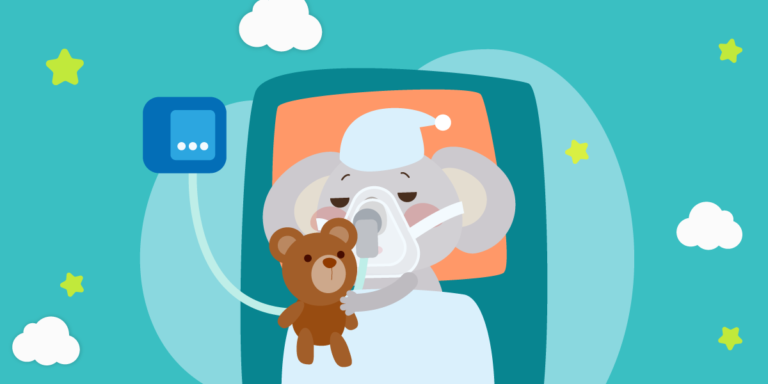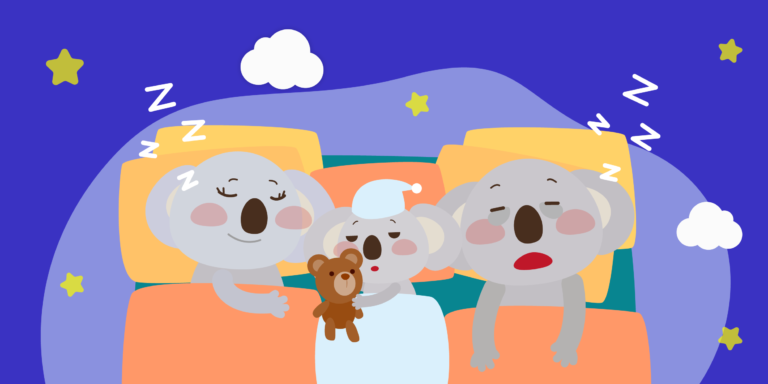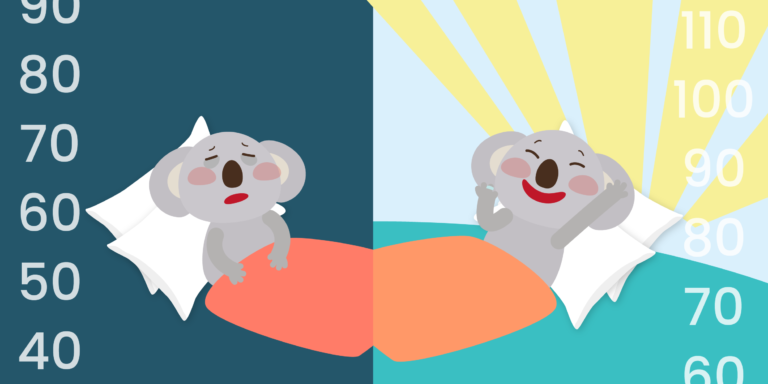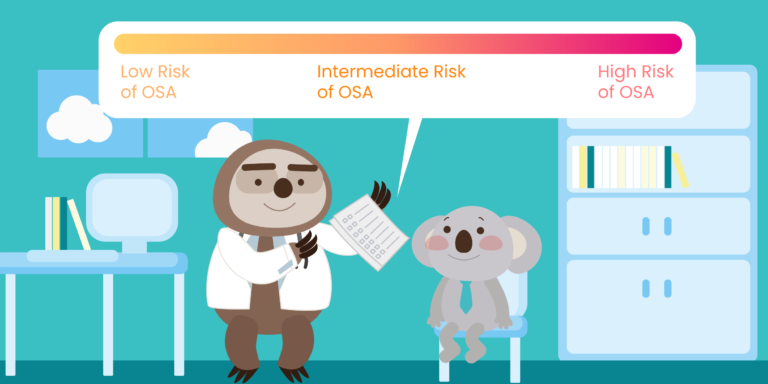Common Sleep Apnea Symptoms
Getting diagnosed with sleep apnea might be unfamiliar and worrisome, but symptoms of sleep apnea are manageable and treatable. After a sleep apnea diagnosis, it’s important to start treatment and consult a doctor on certain sleep apnea treatment options to help reduce the apneic symptoms and improve sleep quality.
If you are always feeling tired after sleeping, it might be a sign that you are suffering from sleep apnea. Here are some other common symptoms of sleep apnea you should be aware of:
- Loud snoring and gasping for air during sleep
- Morning headaches
- Excessive daytime sleepiness (hypersomnia)
- Interrupted sleep and waking up during the night
- Frequent nighttime urination
- Constant irritability or mood changes during the day
- Lack of concentration or short attention span
Diagnosis of Sleep Apnea
Signs of sleep apnea is usually noticed by bed partners or close family. Therefore, you might not be able to realize that you are facing these symptoms until someone reports it. The doctor can only properly diagnose sleep apnea with thorough overnight monitoring. There are two types of sleep tests that can be done, which include:
- Nocturnal polysomnography
You will be referred to a sleep clinic, where you will be hooked up to equipment to monitor your heart rate, breathing patterns, lung and brain activity, blood oxygen levels, and arm and leg movements while you are sleeping. - At-home sleep apnea tests
Your physician might provide you with a simplified breathing monitor that can be used at home to diagnose sleep apnea. The home sleep test can track your breathing, oxygen levels, and other important health parameters overnight.
If the monitor detects abnormal results, your doctor may be able to prescribe a treatment plan without further testing in a sleep center.
Treatment for Sleep Apnea
There are different levels of treatment options for sleep apnea, and medication alone cannot treat sleep apnea. Managing sleep apnea is a long-term commitment and can vary depending on the cause of sleep apnea, the severity of symptoms shown or the types of sleep apnea patients suffer from.
A healthier lifestyle
The most basic sleep apnea home treatment that doctors recommend is making lifestyle changes, which can be done with the following actions:
- Consuming a healthy diet
- Developing healthy sleeping habits
- Limiting alcohol consumption
- Quit smoking habit
- Managing weight
- Sleeping on the side instead of lying on your back
- Using nasal decongestants or allergy medications
- Avoiding sedative medications to fall asleep, such as antidepressants or sleeping pills
Medical Treatment for Sleep Apnea
While healthy lifestyle would be a way to treat mild sleep apnea, it is recommended to do further treatment of sleep apnea when you are diagnosed with moderate to severe symptoms of sleep apnea. There are different types of sleep apnea therapies recommended by the experts to help open up a blocked airway:
- Continuous positive airway pressure (CPAP)
What does a CPAP machine do?
CPAP is a standard treatment for sleep apnea. It keeps the patient’s airway track open by sending a constant stream of positive pressure air through a mask.
How to use the CPAP machine?-
- Consult with the doctor before using CPAP and the doctor will determine the amount of pressure and set the machine at that level for you before you bring the machine home.
- Wear the given mask that fits over your nose and/or mouth and secure it with the strap attached.
- A hose connects the mask to the CPAP machine.
- CPAP machine collects, filters, and pressurizes air from the room before sending it through the hose into the airway.
- Wear the mask for a minimum of 4 hours / at least 5 days a week.
-
CPAP is considered one of the most consistently successful methods to treat Obstructive Sleep Apnea (OSA). However, some people may find it a bit uncomfortable to use the mask and strap during sleep as it may cause feelings of discomfort or claustrophobia.
- Bi-level positive airway pressure (Bi-PAP)
Bi-PAP is another type of positive airway pressure therapy, but it controls both the amount of pressure in and out of the airway. It provides a consistent amount of pressure when breathing in and a different amount of pressure when breathing out. - Mouthpiece or oral device
Another alternative treatment for people with mild or moderate obstructive sleep apnea is using a mouthpiece. Certain people who can’t use CPAP can also switch to this treatment option. The mouthpiece holds the throat open by bringing the lower jaw forward. It expands the space behind the tongue and keeps the upper airway open. Some other devices can also hold your tongue in various positions. This could help relieve snoring and reduce obstructive sleep apnea symptoms.However, it is recommended to consult a dentist who is experienced in dental sleep medicine appliances for the fitting of the mouthpiece and do follow-up therapy afterward. Close follow-up is necessary to ensure successful treatment without the device causing damage to the teeth or causing jaws to shift.
- Adaptive servo-ventilation (ASV)
This newest technology of airflow device learns your normal breathing pattern and stores the information in a built-in computer. After falling asleep, a machine uses pressure to normalize the breathing pattern and prevent pauses in breathing during sleep. It has shown positive results in treating complex sleep apnea in some people. However, it is currently not recommended for people with predominant central sleep apnea (CSA) and advanced heart failure. - Combination of airway pressure therapy with oral medication
Some sleep specialists also recommend a combination of medication with CPAP or other airway pressure therapy for apneic treatment. Frequently prescribed drugs include acetazolamide, triazolam, or zolpidem.
Considering Surgery as Sleep Apnea Treatment
When things didn’t go as expected with treatment or airway pressure therapies, surgery would be the last resort in treating sleep apnea symptoms. Doctors normally recommend a minimum of three months’ time to try different treatments before discussing the option of surgery with patients. There are several surgeries that can be considered:
- Tissue removal surgery: Uvulopalatopharyngoplasty (UPPP)
This procedure removes tissue at the back of the mouth and the top of the throat. Tonsils and adenoids may also be removed. UPPP is normally performed in a hospital and requires a general anesthetic.
This surgery might help to stop throat structures from vibrating which causes snoring. However, it is not as effective as CPAP and isn’t considered a reliable treatment for obstructive sleep apnea. This is another treatment option to consider if you can’t tolerate CPAP or mouthpiece appliances. - Jaw surgery: Maxillomandibular advancement
This procedure moves the upper and lower parts of the jaw forward from the rest of the facial bones. It enlarges the space behind the tongue and soft palate and reduces the possibility of obstruction. - Upper airway stimulation with device implantation
A small and thin impulse will be implanted into the skin of the upper chest. The device will detect your breathing pattern and stimulate the nerve that controls tongue movement (when necessary). This procedure is also recommended for people who suffer from moderate to severe obstructive sleep apnea, but can’t tolerate CPAP or Bi-PAP. - Nerve stimulation
A stimulator is placed on the nerve that controls tongue movement (hypoglossal nerve). The stimulation will help to keep the tongue in place and maintain the airway to stay open. However, more research is still needed on this technology. - Surgical opening in the neck: Tracheostomy
Tracheostomy is needed urgently when severe or life-threatening obstructive sleep apnea symptoms are present. The surgeon will make an opening in the neck, and insert a metal or plastic tube to breathe. The opening is covered throughout the day and opened at night to allow air to pass in and out of the lungs thereby bypassing the blocked air passage in the throat.
Sleep apnea testing may result in different stages, starting from mild, moderate, or even severe diagnoses. Even so, no matter how severe your sleep apnea symptoms are, there are always treatment options to discover and explore. It’s important to consult with a doctor on how to start treatment for sleep apnea, and always conduct treatment under a doctor’s supervision. Everyone reacts differently to various sleep apnea treatments, whether it is CPAP or Bi-PAP, with or without medication. After a couple of times of adjustments from your doctor, you will finally find yourself sleeping better and you can expect a significant improvement throughout your sleep apnea treatment journey!







